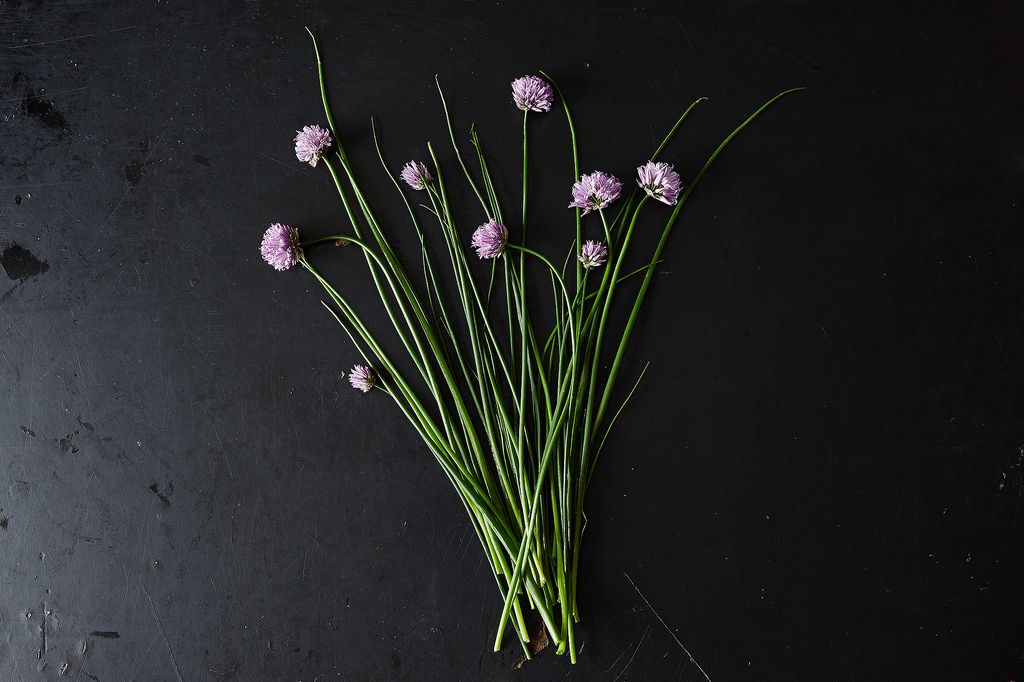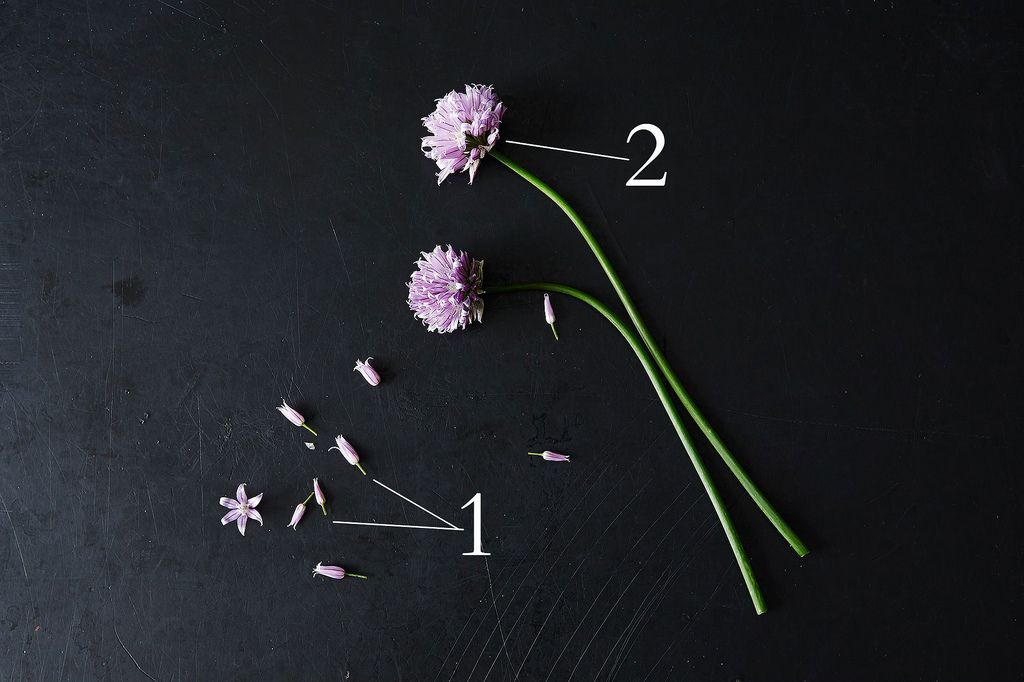Every week we get Down & Dirty, in which we break down our favorite unique seasonal fruits, vegetables, and more. This post was brought to you by our friends at Evolution Fresh, who like fresh, flavorful ingredients as much as we do.
Today: Get to know the smallest of the edible alliums.

Some members of the allium family -- onions, leeks, shallots -- work hard to get a dish started, while others, like chives, finish it off. Chives are almost always added to a dish at the end of cooking in order to preserve their mild onion flavor. Chive blossoms are edible too, and carry that same delicate flavor -- but of course if you don’t want to eat them, the lavender orbs are just as enjoyable bobbing in a vase.
More: Another edible beauty to seek out? Arugula flowers.
To prep chives, Deborah Madison advises against chopping them by running a knife back and forth across their slender hollow leaves, explaining: “That bruises and mashes them more than anything. Instead, slice them once through with a sharp knife or snip them with scissors.”

Chive blossoms can successfully be dried, but don’t bother trying to preserve the leaves for later. Dried chives don’t taste like much -- they’re really only good for giving you a flashback to the teeny packets you got with misguided drive-thru orders of sad baked potatoes. (No one needs to relive that disappointment.)
So put them to good use fresh -- practically everywhere. Chives pair well with cheese: Snip a green flurry over a bowl of cottage cheese, mix with ricotta in gnocchi, or stir into a cheesy bowl of grains. Chives also work well with eggs -- like in a soft scramble -- and potatoes: roasted, in tater tots, or a potato salad. Chives are a natural in condiments, too: in aioli, a lemony mayonnaise, or a vegan pesto with spinach.
Or put them to work in salad dressings like buttermilk ranch, a creamy blend of lime and crème fraîche, or a basil-packed vinaigrette. Chives blossoms work well in a lot of the same places -- scatter the individual blossoms (1) over cheese or potato dishes, grain or green salads, or make a lavender-flecked compound butter. Left whole, entire flower heads (2) can be used to make chive blossom vinegar.
Tell us: How do you like to use chives and chive blossoms?
Photos by Mark Weinberg
 This post was brought to you by Evolution Fresh. Check out their new pairing guide to find out which foods go best with their juices.
This post was brought to you by Evolution Fresh. Check out their new pairing guide to find out which foods go best with their juices.




See what other Food52 readers are saying.